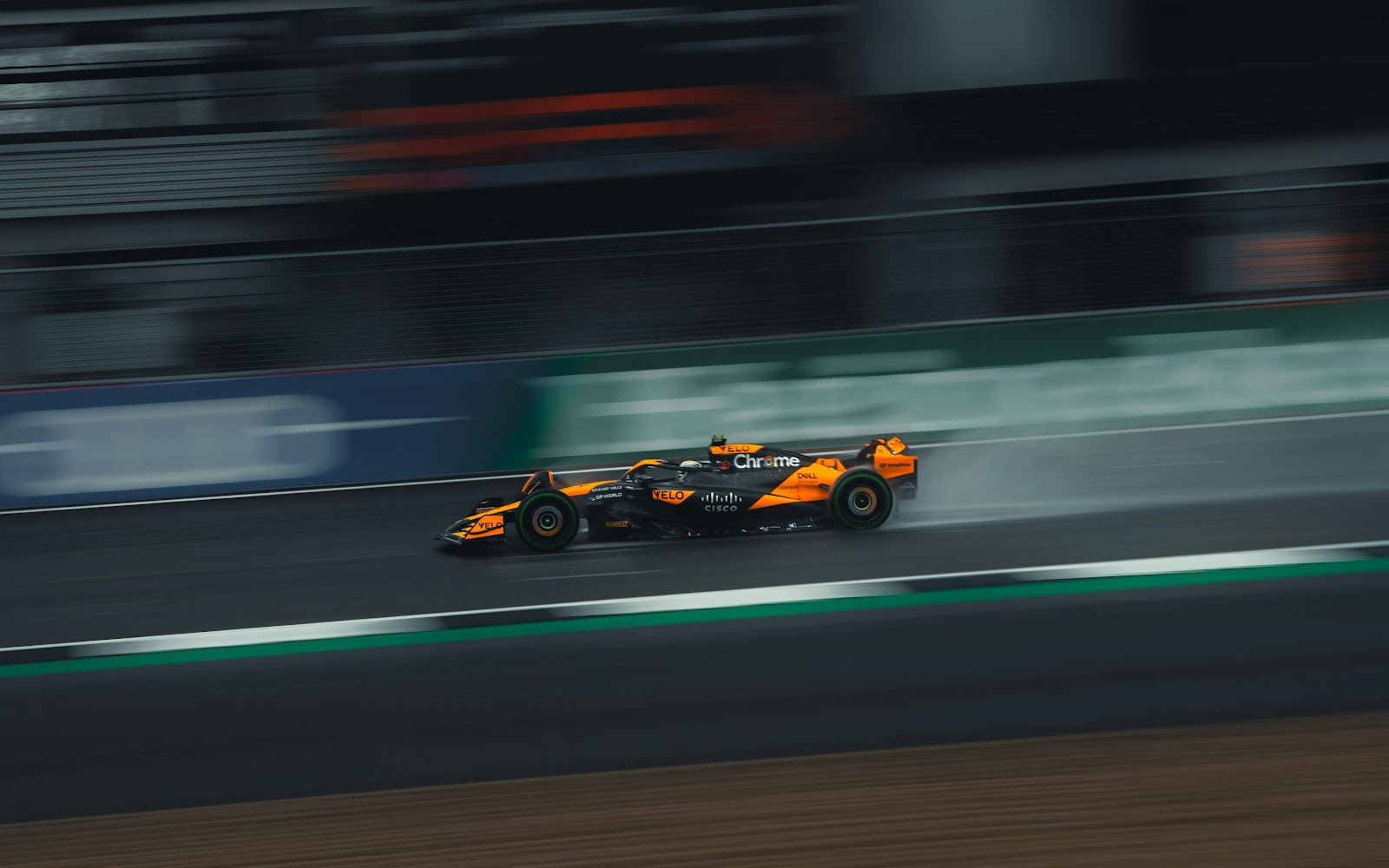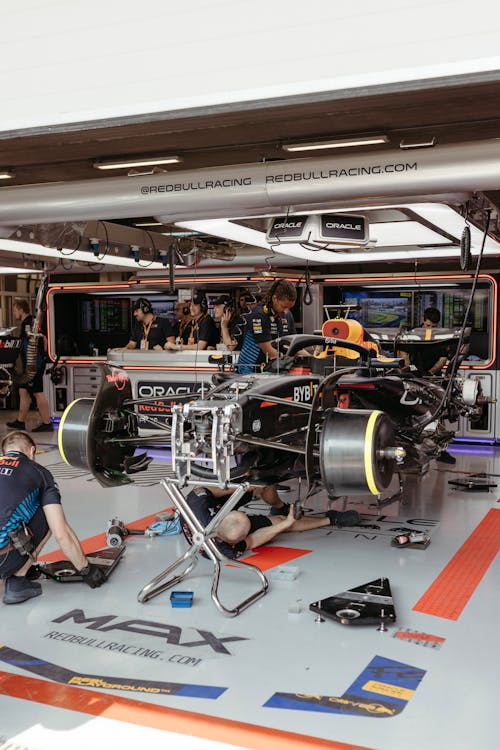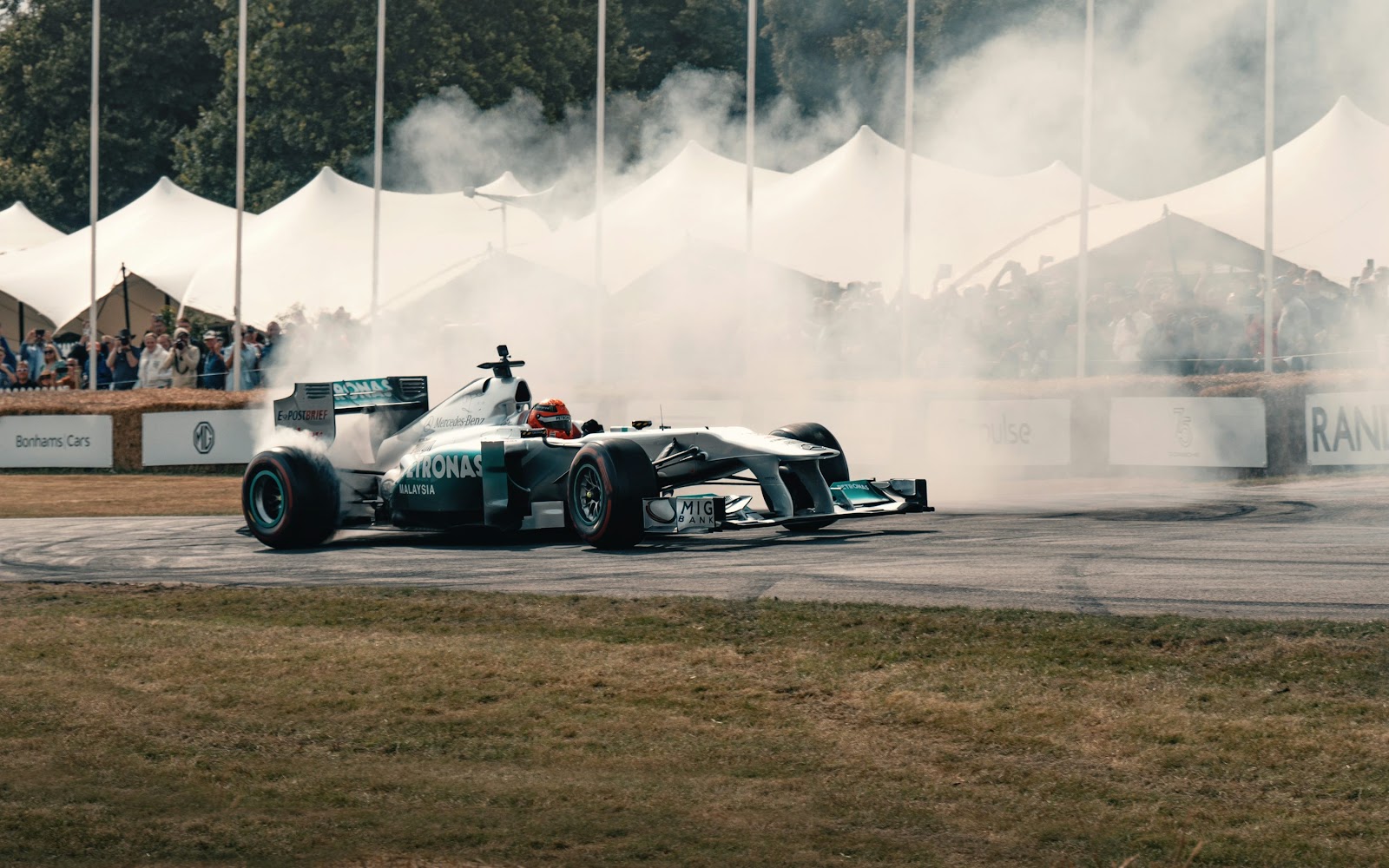Are F1 Cars Manual? The Complete Guide to Formula 1 Transmission Systems

The question "Are F1 cars manual?" sparks curiosity among motorsport enthusiasts and casual fans alike. Whilst road cars commonly feature traditional manual transmissions with a clutch pedal and gear lever, Formula 1 cars operate on an entirely different level of technological sophistication.
Modern F1 cars use advanced semi-automatic gearbox systems that represent the pinnacle of automotive engineering. These systems are explicitly designed to maximise performance during a race.
Unlike conventional road cars, where the driver operates a manual clutch and shifts gears using a traditional lever, Formula 1 car transmission systems are built for speed, precision, and optimal performance.
The evolution from manual gearboxes to today's sophisticated systems reflects decades of technological advancement in motorsport, where every millisecond counts, and driver skill must be complemented by mechanical precision.
How Do Modern F1 Transmission Systems Actually Work?
Formula 1 cars utilise semi-automatic gearbox technology that combines elements of both manual and automatic systems.
The transmission in a Formula 1 car is operated through paddle shifters located on the steering wheel. It allows f1 drivers to change gears without taking their hands off the wheel or using a foot-operated clutch pedal during the race.
The gearbox in modern F1 cars features eight forward gears, each precisely calibrated to extract maximum power from the engine across different speed ranges. Unlike manual transmissions found in road cars, these systems use hydraulic and electronic controls to manage gear changes with incredible precision.
When a driver operates the right paddle behind the steering wheel, the system shifts up to a faster gear. The left paddle shifts down to provide more torque for acceleration or engine braking.
The Role of the Clutch in F1 Cars
Whilst F1 cars don't have a traditional clutch pedal like manual road cars, they do incorporate clutch systems in their design.
Cars have a clutch system that's most frequently used at the start of the race and when entering or leaving the pit lane. During these critical moments, drivers must manually engage the clutch using paddle controls located on the steering wheel.
The clutch system in a Formula 1 car allows precise control over power delivery from the engine to the transmission. This technological approach ensures that F1 drivers can maintain optimal performance whilst focusing entirely on racing.
Electronic Control and Seamless Shifting
Modern Formula 1 cars feature seamless shift technology that enables gear changes without interrupting power delivery to the wheels. This system represents a significant advancement over traditional manual gearboxes, where engaging the clutch temporarily disconnects the engine from the transmission.
Electronic control systems in F1 cars monitor engine rpm, vehicle speed, and throttle position to determine the optimal timing for gear changes.
The team behind each Formula 1 car programmes the transmission system with specific parameters that optimise the car's performance for different racing conditions. These settings can be adjusted for various tracks, weather conditions, and race strategies, allowing drivers to maximise their lap times whilst maintaining mechanical reliability throughout the race distance.

Why Don't F1 Cars Use Traditional Manual Transmissions?
The ban on fully automatic transmission systems in Formula 1, combined with the sport's relentless pursuit of speed and efficiency, has led to the development of semi-automatic gearbox technology.
Manual transmissions, whilst offering direct driver control, simply cannot match the precision and speed required for modern F1 racing.
Traditional manual gearboxes require drivers to use a clutch pedal and gear lever to shift gears manually. This process takes valuable time and requires the driver to remove one hand from the steering wheel.
In Formula 1, where lap times are measured in fractions of seconds and maintaining control is paramount, this approach would significantly compromise both speed and safety.
Performance Limitations of Manual Systems
Manual transmissions in road cars typically require several hundred milliseconds to complete a gear change, during which power delivery to the wheels is interrupted.
In sharp contrast, the semi-automatic gearbox systems used in Formula 1 cars can complete gear changes in just a few milliseconds, maintaining continuous power flow and allowing F1 drivers to focus entirely on racing lines and strategy.
The mechanical complexity of traditional manual systems also presents reliability challenges in the extreme environment of Formula 1 racing.
Formula 1 cars are built to withstand incredible stresses during races, with engines producing massive torque and vehicles experiencing significant g-forces during acceleration, braking, and cornering. Manual gearboxes with traditional clutch pedals and mechanical linkages would be more prone to failure under these conditions.
Regulatory Considerations
Formula 1 regulations specifically prohibit certain transmission technologies whilst encouraging others. The sport has implemented a ban on continuously variable transmission (CVT) systems and fully automatic transmissions, requiring drivers to maintain direct control over gear selection.
However, the regulation allows for sophisticated semi-automatic systems that enhance performance whilst preserving the skill element of gear shifting.
These regulatory frameworks ensure that driver skill remains a crucial factor in Formula 1 car performance whilst allowing teams to develop advanced transmission technologies.
How Do F1 Drivers Control Gear Changes in Modern Racing?

The steering wheel of a modern Formula 1 car is the command centre for virtually all vehicle functions, including gear shifting.
F1 drivers manage gear changes using paddle shifters integrated into the steering wheel design, allowing them to shift gears whilst maintaining full control of the vehicle's direction and speed.
This setup allows drivers to change gears whilst simultaneously adjusting their racing line, managing throttle input, and monitoring race conditions.
Integration With Vehicle Systems
Modern F1 cars integrate the transmission system with numerous other vehicle control systems, including traction control, power steering systems, and engine management. This integration allows the car's performance to be optimised automatically based on driving conditions whilst still requiring active driver input for gear selection.
The system in a Formula 1 car monitors multiple parameters, including wheel speed, engine temperature, fuel consumption, and tyre condition. This data helps optimise gear selection recommendations and ensures that the transmission operates within safe parameters throughout the race.
Drivers receive real-time feedback through their steering wheel displays, allowing them to make informed decisions about gear-shifting strategy.
Driver Skill and Adaptation
Despite the technological sophistication of modern F1 transmissions, driver skill remains crucial for maximising performance. F1 drivers must master the timing of gear changes to optimise acceleration, maintain vehicle balance during cornering, and manage tyre wear throughout long racing stints.
The ability to integrate gear shifting with other racing tasks separates elite drivers from their competitors.
Professional F1 drivers spend countless hours in simulators and during practice sessions learning to optimise their gear-shifting techniques for different tracks and racing conditions. The precise timing of gear changes can significantly impact lap times, fuel efficiency, and overall race strategy, making transmission management a critical skill for success in Formula 1.
Technological Evolution and Future Developments
The continuous evolution of transmission technology in Formula 1 drives innovation that eventually benefits road cars and other motorsport categories.
Current research focuses on improving the efficiency and reliability of semi-automatic gearbox systems whilst maintaining the sport's emphasis on driver skill and competition.
Future developments may include even more sophisticated electronic control systems, improved materials for transmission components, and enhanced integration with hybrid power systems. However, the fundamental principle of requiring driver-controlled gear changes will likely remain central to Formula 1's identity as the pinnacle of motorsport technology and driver skill.
Conclusion
Formula 1 cars are not manual in the traditional sense, but they're not fully automatic either. Instead, they use sophisticated semi-automatic gearbox systems that combine the precision of electronic control with the skill requirement of manual gear selection.
This technology represents the perfect balance between performance optimisation and driver involvement that defines modern Formula 1 racing.
As Formula 1 continues to push the boundaries of automotive technology, transmission systems will undoubtedly continue evolving, but the fundamental requirement for driver skill and control will remain at the heart of the sport.
Frequently Asked Questions
Do F1 cars have a reverse gear?
Yes, F1 cars are required by regulation to have a reverse gear, though it's rarely used during races. The reverse gear is primarily for safety purposes, allowing drivers to back out of gravel traps or move the car in emergency situations.
How many gears do F1 cars have compared to road cars?
Current F1 cars have eight forward gears plus reverse, which is more than most road cars. This high number of gears allows for optimal power delivery across the wide range of speeds experienced during racing, from slow corners to high-speed straights exceeding 300 km/h.
Can F1 cars start without using the clutch?
No, F1 cars require clutch engagement for race starts and when moving from a complete stop. However, once the car is moving, drivers can shift gears without using the clutch, thanks to the seamless shift technology.
Are the paddle shifters the same for all F1 teams?
Whilst all teams use paddle shifters located on the steering wheel, each team designs its own steering wheel layout and paddle configuration. Some teams use different paddle shapes, sizes, or positions based on driver preferences and ergonomic considerations. That said, the basic left-paddle-down, right-paddle-up configuration is standard across the sport.
